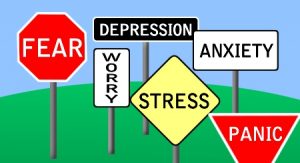Since opening my private practice in 2009, I have been privileged to work with over 300 individuals and families, providing consultation, evaluations, and treatment for a variety of mental health conditions. I believe in being transparent and straightforward about the services I provide and why I provide them. Individuals who are seeking mental health services for themselves or for their children have a right to know what treatment with a particular provider will actually be like, how long it will last, what outcomes they can expect, and what factors contribute to a more or less favorable outcome.
To this end, I collect detailed information on my patients’ treatment outcomes and publish the results on my blog. Here is an updated summary of treatment outcomes for the disorders I most commonly treat. For more detailed information on the types of treatment provided and treatment outcomes in my practice for each of these disorders, click on the category heading.
Treatment Outcomes for Anorexia Nervosa
- 50% of patients who entered treatment with me completed a full course of treatment with me. 26% dropped out of treatment prematurely. 22% were referred to other providers who could better meet their needs. 3% moved to other geographic locations during treatment.
- 97% of patients who completed treatment achieved full remission. The remaining 3% achieved physical remission.
- The majority of patients who completed treatment did so in a time frame of somewhere between 7 months and 2 years.
- A full course of treatment required, on average, 27 sessions over the course of 17 months.
- Patients with co-morbid conditions, such as anxiety disorders or depression, required more sessions, on average, than those without co-morbid conditions.
- All patients who completed treatment achieved 100% full weight restoration, as indicated by a return to their pre-AN percentile patterns of growth for height and weight.
- Average time to achieve weight restoration was 3.6 months.
- Patients who recovered with individual therapy took longer, on average, to achieve weight restoration than those who recovered through Family-Based Treatment (FBT).
- Patients receiving FBT were almost twice as likely to recover as those receiving individual therapy.
- Patients receiving individual therapy were almost twice as likely as those receiving FBT to drop out of treatment prematurely.
- Individuals with restrictive Anorexia Nervosa were twice as likely to achieve full remission as those with binge-purge Anorexia Nervosa.
- For treatment drop-outs, there was a significant correlation between length of time spent in treatment and progress made. All treatment dropouts who were in treatment with me for at least 2 months had made significant progress towards treatment goals at the time of drop-out. Patients who dropped out of treatment after one month or less had not made any progress at the time of drop-out.
Treatment Outcomes for Bulimia Nervosa
- Over half of patients with bulimia nervosa (54%) discontinued treatment prematurely after making significant progress towards treatment goals, but prior to achieving full remission. 15% percent of patients were referred to other treatment providers or types of treatment that could better meet their needs, after making little or no progress in treatment with me. 8% of patients moved to other geographic locations and were thus referred to providers near their new homes. 23% of patients completed a full course of treatment with me.
- Of those who completed a full course of treatment, 100% achieved full remission from their eating disorder.
- A full course of treatment required, on average, 13 sessions over the course of 5 months.
- Patients who took Prozac during treatment were more likely to achieve full remission than those who did not take medication.
- Patients with a prior history of Anorexia Nervosa were less likely to recover from Bulimia than those who did not have a prior history of Anorexia Nervosa.
- The presence of a comorbid diagnosis was not related to likelihood of achieving full remission from Bulimia.
- Level of family involvement in treatment was not related to the likelihood of achieving full remission. This finding is in stark contrast to my outcomes for Anorexia Nervosa, in which family involvement was strongly correlated with positive treatment outcome.
Treatment Outcomes for Mood Disorders
- Only 18% of patients who presented with a primary diagnosis of a mood disorder completed a full course of treatment with me. 50% discontinued treatment prematurely for unknown reasons, 15% moved to other geographic locations, and 18% were referred to other providers who could better meet their needs.
- Of those who completed a full course of treatment with me, 83% achieved full remission from their mood disorder and the remaining 17% made significant progress towards their treatment goals.
- Length of time to complete treatment varied dramatically (from 1 month to 3 years) based on individual needs, symptom severity, and progress. On average, a full course of treatment required 23 sessions over the course of 16 months.
- High levels of family involvement predicted treatment completion and full recovery for adolescent patients but not for adult patients.
- Patients who were self-referred were more likely to complete treatment and achieve full remission than those who were referred by another professional.
- Predictors of less favorable treatment outcomes included hospitalization during treatment and taking psychotropic medication during treatment, most likely because these variables are markers for more severe forms of mental illness.
- The following variables did NOT predict treatment outcome: age at intake, gender, ethnicity, duration of illness, diagnosis (type of mood disorder), presence of co-morbid diagnoses, rate paid for services, type of treatment received with me, or history of hospitalization prior to starting treatment.
Treatment Outcomes for Anxiety Disorders
- Half of patients who entered treatment for anxiety disorders completed a full course of treatment with me.
- Of those who completed a full course of treatment, 88% achieved full recovery and the remaining 12% made significant progress towards their treatment goals.
- Length of time required to complete a full course of treatment varied dramatically from 1 month to 19 months, with a median treatment duration of 3 months.
- Of those who discontinued treatment prematurely, 63% had made significant progress towards their treatment goals as of their final session with me, and the remaining 37% had made some progress.
- Predictors of positive treatment outcome included high levels of family involvement in treatment, younger age at intake, shorter duration of illness, being self-referred to my practice, paying full rate for services, and having good attendance at therapy sessions.
- Predictors of less favorable treatment outcome included presence of a comorbid diagnosis, taking psychotropic medication during treatment with me, and being referred to my practice by a psychiatrist.
General Conclusions
- Across diagnostic categories, less than half of patients who enter treatment with me complete a full course of treatment with me.
- I tend to set the bar high for my patients, striving to engage them and help them continue to progress until they reach full remission.
- Many individuals and families decide to discontinue treatment after making significant progress towards treatment goals, but prior to achieving full remission.
- I hope that those who discontinue treatment after making significant progress, but prior to achieving full remission, continue to move forward and eventually achieve full remission with the support of their families and/or with other professional supports. My primary goal in working with families is to empower the parents to help their child. My goal is to become obsolete for that particular family. For this reason, when a family reaches a point where the parents are confident that “We’ve got it from here!” and my involvement is no longer necessary, then I have done my job well. Therefore, dropping out of treatment prematurely, after making significant progress in treatment, may not necessarily be a negative thing.
- Across all diagnostic categories, patients who complete a full course of treatment with me do very well in recovery. The vast majority achieve full remission from their illness.





